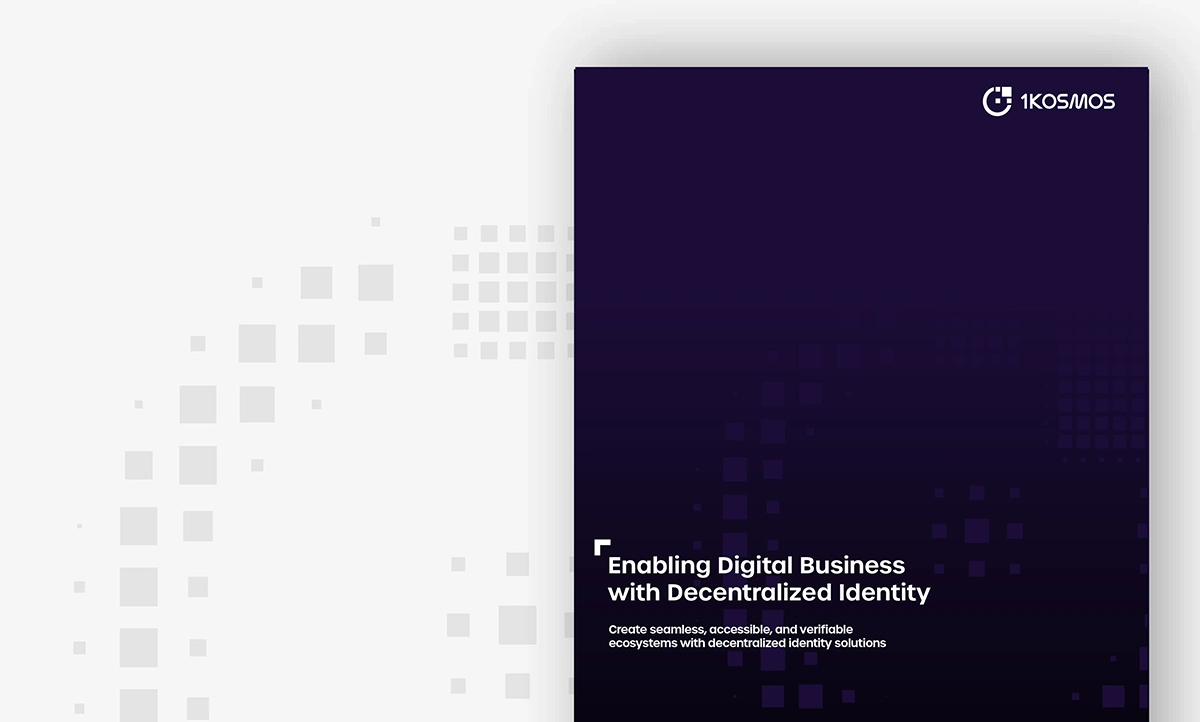Blockchain Identity Management: A Complete Guide
Introduction
Traditional identity verification methods show their age, often proving susceptible to data breaches and inefficiencies. Blockchain emerges as a beacon of hope in this scenario, heralding a new era of enhanced data security, transparency, and user-centric control to manage digital identities. This article delves deep into blockchain’s transformative potential in identity verification, highlighting its advantages and the challenges it adeptly addresses.
What is Blockchain?
Blockchain technology represents the decentralized storage of a digital ledger of transactions. Distributed across a network of computers, decentralized storage of this ledger ensures that every transaction gets recorded in multiple places. The decentralized nature of blockchain technology ensures that no single entity controls the entire blockchain, and all transactions are transparent to every user.
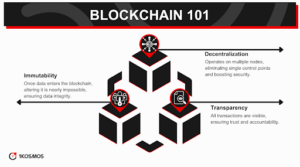
Types of Blockchains: Public vs. Private
Blockchain technology can be categorized into two primary types: public and private. Public blockchains are open networks where anyone can participate and view transactions. This transparency ensures security and trust but can raise privacy concerns. In contrast, private blockchains are controlled by specific organizations or consortia and restrict access to approved members only. This restricted access offers enhanced privacy and control, making private blockchains suitable for businesses that require confidentiality and secure data management.
Brief history and definition
The concept of a distributed ledger technology, a blockchain, was first introduced in 2008 by an anonymous entity known as Satoshi Nakamoto. Initially, it was the underlying technology for the cryptocurrency Bitcoin. The primary goal was to create a decentralized currency, independent of retaining control of any central authority, that could be transferred electronically in a secure, verifiable, and immutable way. Over time, the potential applications of blockchain have expanded far beyond cryptocurrency. Today, it is the backbone for various applications, from supply chain and blockchain identity management solutions to voting systems.
Core principles
Blockchain operates on a few core principles. Firstly, it’s decentralized, meaning no single entity or organization controls the entire chain. Instead, multiple participants (nodes) hold copies of the whole blockchain. Secondly, transactions are transparent. Every transaction is visible to anyone who has access to the system. Lastly, once data is recorded on a blockchain, it becomes immutable. This means that it cannot be altered without altering all subsequent blocks, which requires the consensus of most of the blockchain network.
The Need for Improved Identity Verification
Identity verification is a cornerstone for many online processes, from banking to online shopping. However, traditional methods of identity verification could be more challenging. They often rely on centralized databases of sensitive information, making them vulnerable to data breaches. Moreover, these methods prove identity and often require users to share personal details repeatedly, increasing the risk of data theft or misuse.
Current challenges in digital identity
Digital credentials and identity systems today face multiple challenges. Centralized systems are prime targets for hackers. A single breach can expose the personal data of millions of users. Additionally, users often need to manage multiple usernames and passwords across various platforms, leading to password fatigue and increased vulnerability. There’s also the issue of privacy. Centralized digital identities and credentials systems often share user data with third parties, sometimes without the user’s explicit consent.
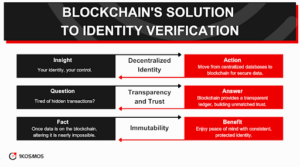
Cost of identity theft and fraud
The implications of identity theft and fraud are vast. It can lead to financial loss, credit damage, and a long recovery process for individuals. For businesses, a breach of sensitive information can result in significant financial losses, damage to business risks, reputation, and loss of customer trust. According to reports, the annual cost of identity theft and fraud runs into billions of dollars globally, affecting individuals and corporations.
How Blockchain Addresses Identity Verification
Blockchain offers a fresh approach to identity verification. By using digital signatures and leveraging its decentralized, transparent, and immutable nature, blockchain technology can provide a more secure and efficient way to verify identity without traditional methods’ pitfalls.
Decentralized Identity
Decentralized identity systems on the blockchain give users complete control over their identity data. Users can provide proof of their identity directly from a blockchain instead of relying on a central authority to keep medical records and verify identity. This reduces the risk of a centralized data breach and gives users autonomy over their identities and personal data.
Transparency and Trust
Blockchain technology fosters trust through transparency, but the scope of this transparency varies significantly between public and private blockchains. Public blockchains allow an unparalleled level of openness, where every transaction is visible to all, promoting trust through verifiable openness. On the other hand, private blockchains offer a selective transparency that is accessible only to its participants. This feature maintains trust among authorized users and ensures that sensitive information remains protected from the public eye, aligning with privacy and corporate security requirements.
Immutability
Once identity data is recorded on a blockchain, it cannot be altered without consensus. This immutability of sensitive, personally identifiable information ensures that identity data remains consistent and trustworthy. It also prevents malicious actors from changing identity data for fraudulent purposes.
Benefits of Blockchain Identity Verification
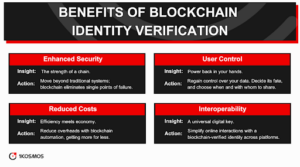
Blockchain’s unique attributes offer a transformative approach to identity verification, addressing many of the challenges faced by the traditional identity systems’ instant verification methods.
Enhanced Security
Traditional identity verification systems, being centralized, are vulnerable to single points of failure. If a hacker gains access, the entire system can be compromised. Blockchain, with its decentralized nature, eliminates this single point of failure. Each transaction is encrypted and linked to the previous one. This cryptographic linkage ensures that even if one block is tampered with, it would be immediately evident, making unauthorized alterations nearly impossible.
User Control
Centralized identity systems often store user data in silos, giving organizations control over individual data. Blockchain shifts this control back to users. With decentralized identity solutions, individuals can choose when, how, and with whom they share their personal information. This not only enhances data security and privacy but also reduces the risk of data being mishandled or misused by third parties.
Reduced Costs
Identity verification, especially in sectors like finance, can be costly. Manual verification processes, paperwork, and the infrastructure needed to support centralized databases contribute to these costs. Blockchain can automate many of these processes using smart contracts, reducing the need for intermediaries and manual interventions and leading to significant cost savings.
Interoperability
In today’s digital landscape, individuals often have their digital identities and personal data scattered across various platforms, each with its verification process. Blockchain can create a unified, interoperable system where one’s digital identity documents can be used across multiple platforms once verified on one platform. This not only enhances user convenience but also streamlines processes for businesses.
The Mechanics Behind Blockchain Identity Verification
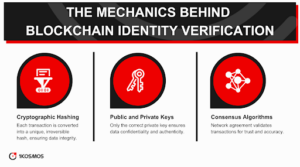
Understanding its underlying mechanics is crucial to appreciating the benefits of the entire blockchain network’s ability for identity verification.
How cryptographic hashing works
Cryptographic hashing is at the heart of the blockchain network’s various security measures. When a transaction occurs, it’s converted into a fixed-size string of numbers and letters using a hash function. This unique hash is nearly impossible to reverse-engineer. When a new block is created, it contains the previous block’s hash, creating a blockchain. Any alteration in a block changes its hash, breaking the chain and alerting the system to potential tampering.
Public and private keys in identity verification
Blockchain uses a combination of public and private keys to ensure secure transactions. A public key is a user’s address on the blockchain, while a private key is secret information that allows them to initiate trades. Only individuals with the correct private key can access and share their data for identity verification, ensuring their data integrity and security.
The role of consensus algorithms
Consensus algorithms are protocols that consider a transaction valid based on the agreement of the majority of participants in the network. They play a crucial role in maintaining the trustworthiness of the blockchain. In identity verification, consensus algorithms ensure that once a user’s identity data is added to the blockchain, it’s accepted and recognized by the majority, ensuring data accuracy and trustworthiness.
Conclusion
Through its unique attributes, blockchain presents a compelling and transformative alternative to the pitfalls of conventional identity management and verification systems. By championing security, decentralization, and user empowerment, it sets a new standard for the future of digital and blockchain identity and access management solutions. To understand how this can redefine your identity management and verification processes, book a call with us today and embark on a journey toward a more secure security posture.
